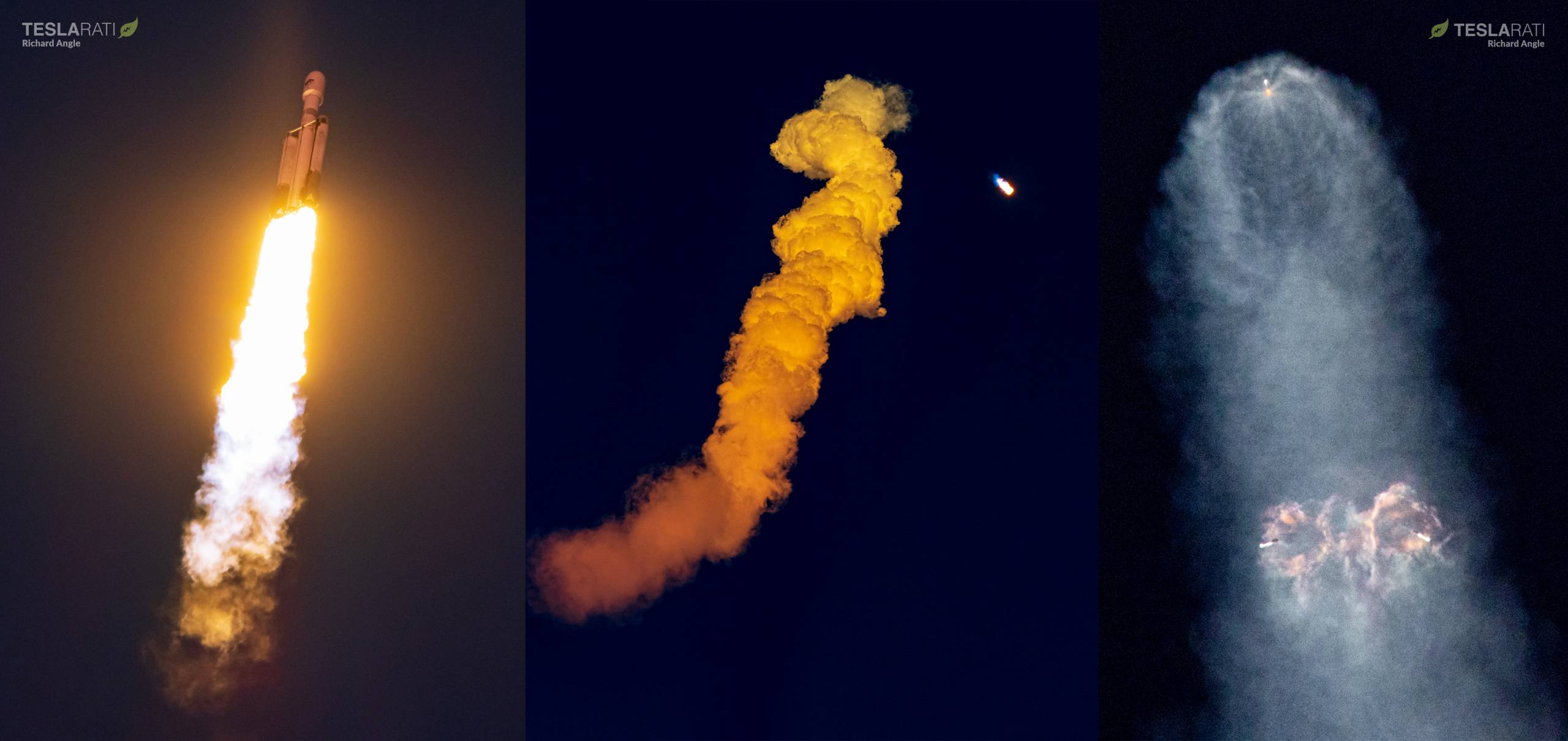
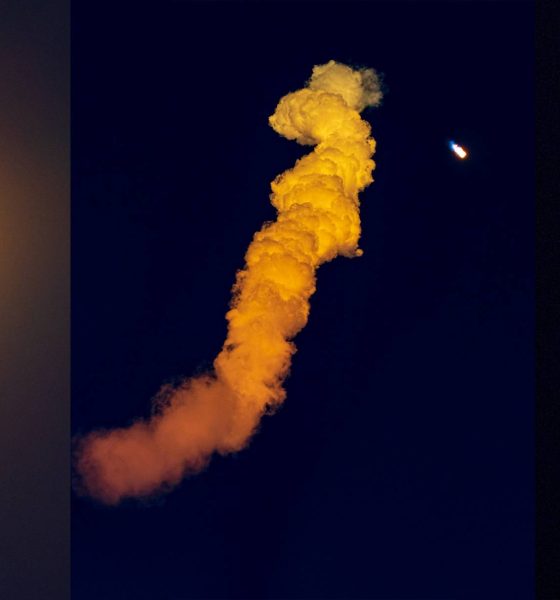
News
SpaceX Falcon Heavy rocket kicks off fifth mission with most spectacular launch yet
SpaceX’s fifth Falcon Heavy lifted off shortly after sunset on the US Space Force’s USSF-67 mission, producing one of the massive commercial rocket’s most spectacular launches yet.
Powered by three Falcon 9-derived boosters, each with nine Merlin 1D engines, Falcon Heavy fired up and soared off of SpaceX’s Kennedy Space Center LC-39A pad at the start of its Sunday launch window. Producing up to 2326 tons (5.13 million lbf) of thrust shortly after liftoff, Falcon Heavy upheld its position as the world’s most powerful commercial rocket and the second most powerful operational rocket.
USSF-67 largely mirrored SpaceX’s November 1st, 2022 USSF-44 Falcon Heavy launch, and even used the same side boosters. Flying for the second time in 75 days, B1064 and B1065 aced their roles in the mission and separated from Falcon Heavy’s expendable center booster (or core) around three minutes after liftoff. The side boosters immediately flipped around with thrusters powered by compressed nitrogen gas and ignited three of their nine Merlin 1D engines to boost back to the Florida coast. After coasting back to Florida, they completed brief reentry burns to lessen atmospheric heating and fired up one last time to gently touch down at SpaceX’s LZ-1 and LZ-2 landing pads.
The update that's rolling out to the fleet makes full use of the front and rear steering travel to minimize turning circle. In this case a reduction of 1.6 feet just over the air— Wes (@wmorrill3) April 16, 2024
Another mysterious military mission
Because Falcon Heavy lifted off after sunset, local skies were dark and the rocket quickly climbed back into daylight, creating spectacular contrast between twilight and the bright rocket exhaust. When Falcon Heavy’s side boosters flipped around and reignited, their high-velocity exhaust plumes slammed into the center core’s opposing plume, producing spectacular interactions and a nebula-like cloud that caught even more of the daylight. Had Falcon Heavy lifted off just a handful of minutes later, a darker sky could have made for an even more incredible ‘nebula’ or ‘jellyfish’, but the rocket’s first twilight launch was still spectacular.
After both side boosters touched down, SpaceX ended its live coverage at the request of the Space Force, reiterating the mission’s secretive customer and nature. Compared to USSF-44, the USSF hasn’t confirmed much about the USSF-67 mission’s payloads, but Falcon Heavy is known to be carrying a geostationary communications relay satellite called CBAS-2 and likely built by Boeing.
CBAS-2 is joined by Northrop Grumman’s third Long Duration Propulsive EELV or LDPE-3A, a combination of a propulsive kick stage and a satellite. LDPE-3A is carrying a collection of rideshare satellites and payloads and is designed to operate for months in orbit. Using USSF-44 as a guide, the total USSF-67 payload could weigh roughly 3.75 to 4.75 tons (8,250-10,500 lb).
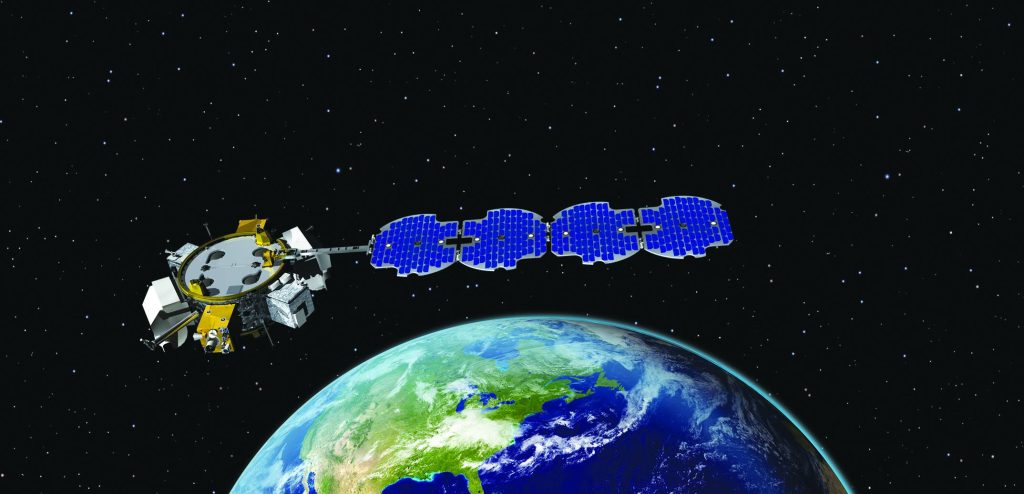
Climbing to GSO
While small compared to ordinary payloads, Falcon Heavy is launching USSF-67 directly to a geosynchronous orbit. Direct-to-GEO/GSO launches are exceptionally challenging for the rocket. Falcon Heavy must first sacrifice one of its three boosters just to ensure the Falcon upper stage is traveling fast enough and has enough propellant to spare when it separates. The upper stage must then conduct at least three or four burns.
The first burn likely carried the upper stage and USSF-67 payload into a parking orbit around 300 kilometers (~185 mi) above Earth’s surface. A second burn of the upper stage’s Merlin Vacuum engine will lift the pair into a geosynchronous transfer orbit (GTO) with the low end still around 300 kilometers but the high end around 35,800 kilometers (~22,250 mi). Finally, the upper stage must survive a roughly five-hour coast to that apogee. During that coast, the rocket must survive passes through both of Earth’s harsh radiation belts and maintain perfect control of its orientation and tank pressures to keep its refined kerosene fuel from freezing, its cryogenic liquid oxygen (LOx) from boiling away, and itself from bursting as its propellant warms and expands.
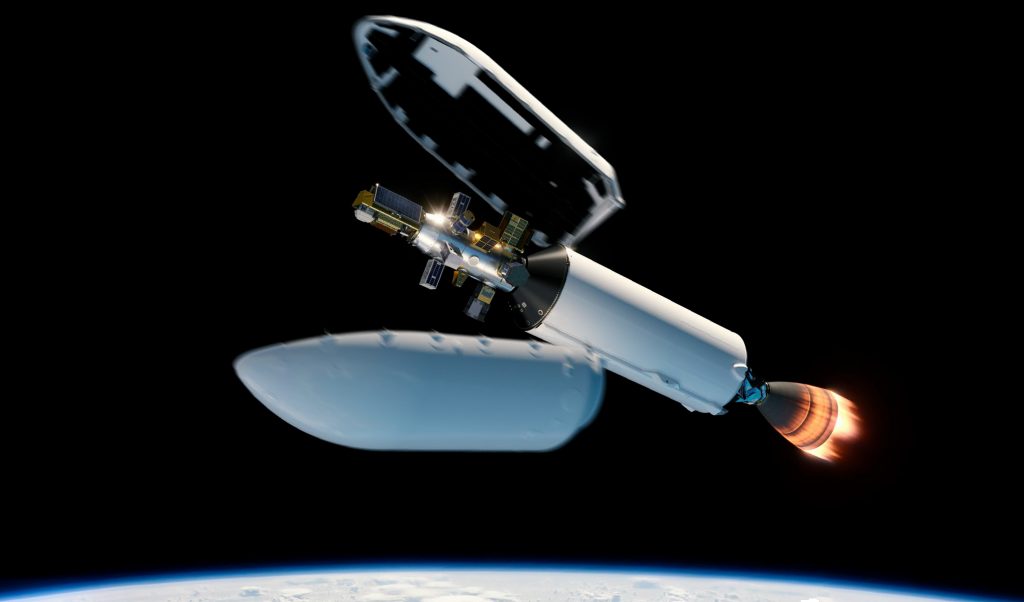
If it does all of those things right, the upper stage will be able to complete a circularization burn at apogee and deploy its CBAS-2 and LPDE-3A payloads directly into geosynchronous orbit (~35,786 x ~35,786 km). At GSO, satellites orbit at the same speed as Earth spins, allowing them to indefinitely hover over the same region of the planet, making it useful for Earth observation, surveillance, and communications. Finally, the Falcon upper stage will attempt to complete one last burn to send itself into a graveyard orbit just above GSO, where it will eventually run out of power and lose control.
It will take around 6-8 hours after liftoff before SpaceX or the USSF can confirm if the mission was a success. Rewatch SpaceX’s fifth Falcon Heavy launch and dual booster landing here.
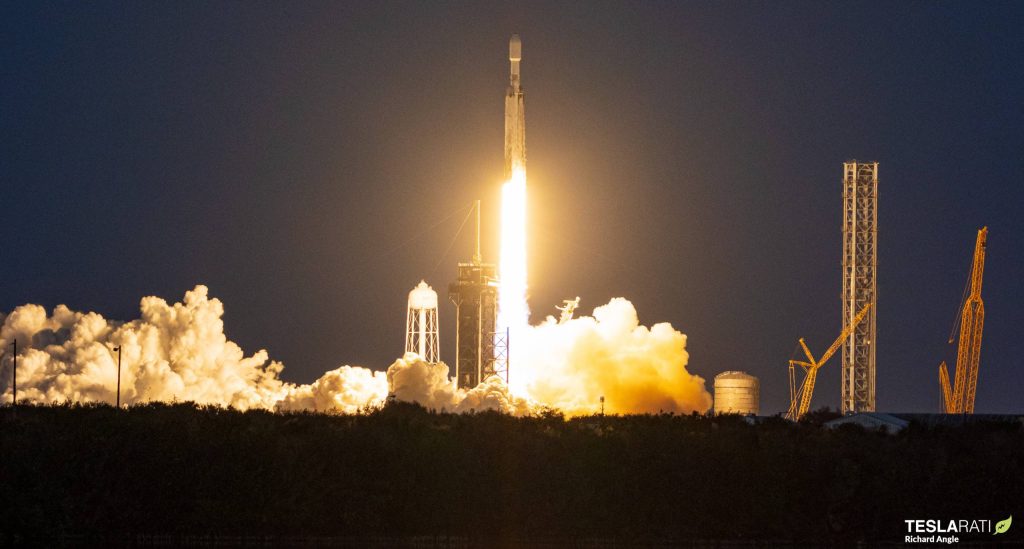
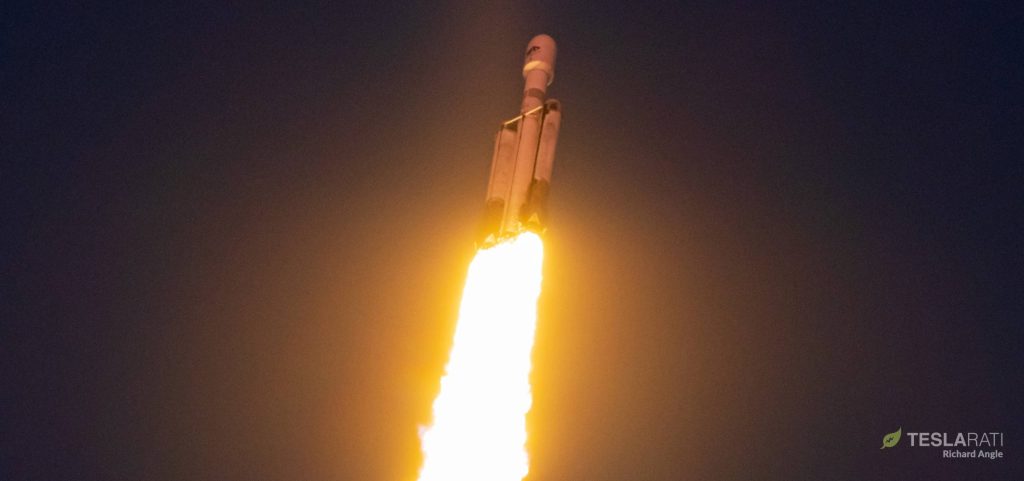
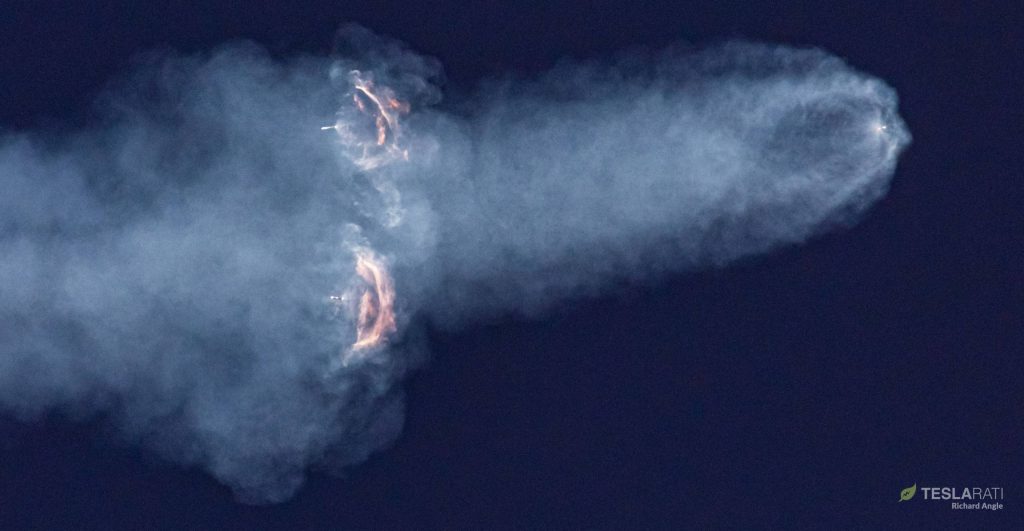
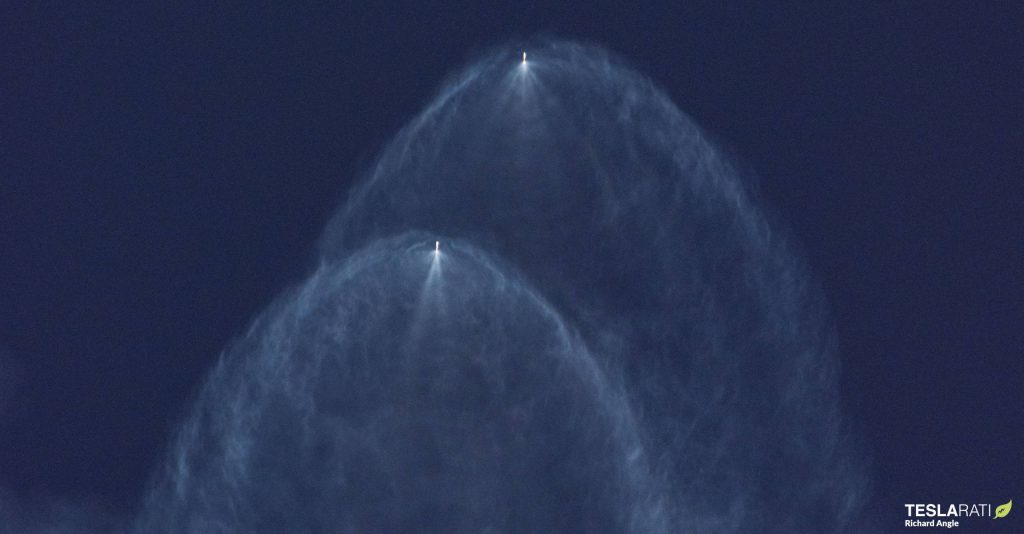



News
Tesla FSD fleet is nearing 7 billion total miles, including 2.5 billion city miles
As can be seen on Tesla’s official FSD webpage, vehicles equipped with the system have now navigated over 6.99 billion miles.

Tesla’s Full Self-Driving (Supervised) fleet is closing in on almost 7 billion total miles driven, as per data posted by the company on its official FSD webpage.
These figures hint at the massive scale of data fueling Tesla’s rapid FSD improvements, which have been quite notable as of late.
FSD mileage milestones
As can be seen on Tesla’s official FSD webpage, vehicles equipped with the system have now navigated over 6.99 billion miles. Tesla owner and avid FSD tester Whole Mars Catalog also shared a screenshot indicating that from the nearly 7 billion miles traveled by the FSD fleet, more than 2.5 billion miles were driven inside cities.
City miles are particularly valuable for complex urban scenarios like unprotected turns, pedestrian interactions, and traffic lights. This is also the difference-maker for FSD, as only complex solutions, such as Waymo’s self-driving taxis, operate similarly on inner-city streets. And even then, incidents such as the San Francisco blackouts have proven challenging for sensor-rich vehicles like Waymos.
Tesla’s data edge
Tesla has a number of advantages in the autonomous vehicle sector, one of which is the size of its fleet and the number of vehicles training FSD on real-world roads. Tesla’s nearly 7 billion FSD miles then allow the company to roll out updates that make its vehicles behave like they are being driven by experienced drivers, even if they are operating on their own.
So notable are Tesla’s improvements to FSD that NVIDIA Director of Robotics Jim Fan, after experiencing FSD v14, noted that the system is the first AI that passes what he described as a “Physical Turing Test.”
“Despite knowing exactly how robot learning works, I still find it magical watching the steering wheel turn by itself. First it feels surreal, next it becomes routine. Then, like the smartphone, taking it away actively hurts. This is how humanity gets rewired and glued to god-like technologies,” Fan wrote in a post on X.
News
Tesla starts showing how FSD will change lives in Europe
Local officials tested the system on narrow country roads and were impressed by FSD’s smooth, human-like driving, with some calling the service a game-changer for everyday life in areas that are far from urban centers.

Tesla has launched Europe’s first public shuttle service using Full Self-Driving (Supervised) in the rural Eifelkreis Bitburg-Prüm region of Germany, demonstrating how the technology can restore independence and mobility for people who struggle with limited transport options.
Local officials tested the system on narrow country roads and were impressed by FSD’s smooth, human-like driving, with some calling the service a game-changer for everyday life in areas that are far from urban centers.
Officials see real impact on rural residents
Arzfeld Mayor Johannes Kuhl and District Administrator Andreas Kruppert personally tested the Tesla shuttle service. This allowed them to see just how well FSD navigated winding lanes and rural roads confidently. Kruppert said, “Autonomous driving sounds like science fiction to many, but we simply see here that it works totally well in rural regions too.” Kuhl, for his part, also noted that FSD “feels like a very experienced driver.”
The pilot complements the area’s “Citizen Bus” program, which provides on-demand rides for elderly residents who can no longer drive themselves. Tesla Europe shared a video of a demonstration of the service, highlighting how FSD gives people their freedom back, even in places where public transport is not as prevalent.
What the Ministry for Economic Affairs and Transport says
Rhineland-Palatinate’s Minister Daniela Schmitt supported the project, praising the collaboration that made this “first of its kind in Europe” possible. As per the ministry, the rural rollout for the service shows FSD’s potential beyond major cities, and it delivers tangible benefits like grocery runs, doctor visits, and social connections for isolated residents.
“Reliable and flexible mobility is especially vital in rural areas. With the launch of a shuttle service using self-driving vehicles (FSD supervised) by Tesla in the Eifelkreis Bitburg-Prüm, an innovative pilot project is now getting underway that complements local community bus services. It is the first project of its kind in Europe.
“The result is a real gain for rural mobility: greater accessibility, more flexibility and tangible benefits for everyday life. A strong signal for innovation, cooperation and future-oriented mobility beyond urban centers,” the ministry wrote in a LinkedIn post.
News
Tesla China quietly posts Robotaxi-related job listing
Tesla China is currently seeking a Low Voltage Electrical Engineer to work on circuit board design for the company’s autonomous vehicles.

Tesla has posted a new job listing in Shanghai explicitly tied to its Robotaxi program, fueling speculation that the company is preparing to launch its dedicated autonomous ride-hailing service in China.
As noted in the listing, Tesla China is currently seeking a Low Voltage Electrical Engineer to work on circuit board design for the company’s autonomous vehicles.
Robotaxi-specific role
The listing, which was shared on social media platform X by industry watcher @tslaming, suggested that Tesla China is looking to fill the role urgently. The job listing itself specifically mentions that the person hired for the role will be working on the Low Voltage Hardware team, which would design the circuit boards that would serve as the nervous system of the Robotaxi.
Key tasks for the role, as indicated in the job listing, include collaboration with PCB layout, firmware, mechanical, program management, and validation teams, among other responsibilities. The role is based in Shanghai.
China Robotaxi launch
China represents a massive potential market for robotaxis, with its dense urban centers and supportive policies in select cities. Tesla has limited permission to roll out FSD in the country, though despite this, its vehicles have been hailed as among the best in the market when it comes to autonomous features. So far, at least, it appears that China supports Tesla’s FSD and Robotaxi rollout.
This was hinted at in November, when Tesla brought the Cybercab to the 8th China International Import Expo (CIIE) in Shanghai, marking the first time that the autonomous two-seater was brought to the Asia-Pacific region. The vehicle, despite not having a release date in China, received a significant amount of interest among the event’s attendees.








